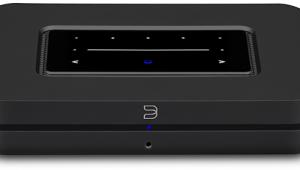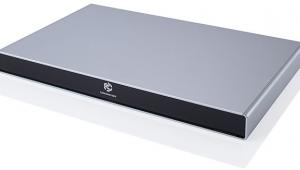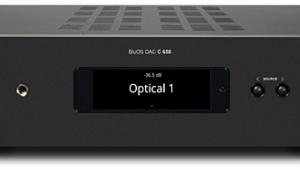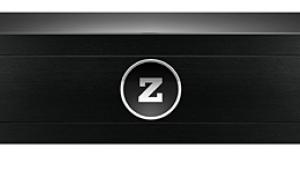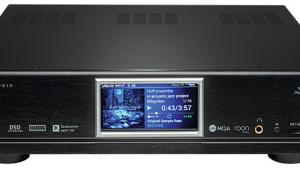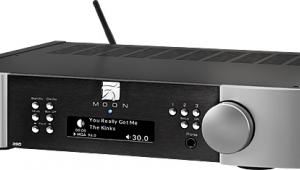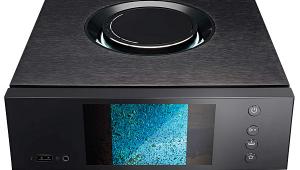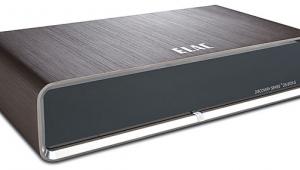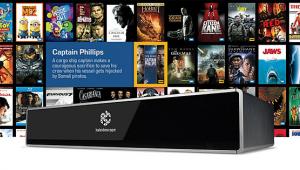Kaleidescape Cinema One Blu-ray Player/Server
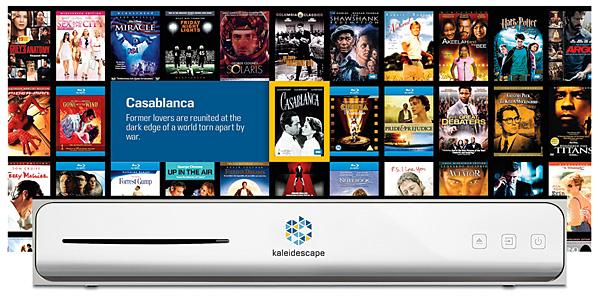
AT A GLANCE
Plus
Internal storage for up to 100 BDs, 600 DVDs, or 6,000 CDs
Bit-for-bit downloads of BDs and DVDs from
Kaleidescape Store
System interface and
operation unmatched by any other movie server
Minus
BD must be inserted to authorize playback, even if movie has been imported
Limited options for adding zones and storage
THE VERDICT
The Cinema One provides almost everything you’d want in a movie server. “Almost” not good enough? Pair it with the DV700 Disc Vault.
Sometimes I’d rather take a jackhammer to my brainstem than dig through piles of disc cases and endure the mind-numbing delays of spinning icons, non-skippable trailers, loading menus, FBI warnings, and whatever else stands in the way of watching a movie at home.
If it seems like I’m exaggerating, it’s only because you haven’t experienced the tidal wave of dopamine that comes with using a movie server in your home theater. For the uninitiated, a movie server is an A/V component that provides near-instant access to movies stored digitally on an internal or external hard drive (or drives). Some servers, such as Kaleidescape’s new Cinema One, include a built-in Blu-ray/DVD player that makes it easy to import movies or music.
However, two issues make it difficult to design and build a great movie server. One is the user interface. Having a hundred or so movies “conveniently” stashed on a hard drive isn’t much of an improvement over physical media if you have to navigate through numerous computer-like menus and folders. The other issue? Like it or not, it’s illegal to copy encrypted Blu-ray Discs and DVDs.
The Experience of a Lifetime
Some companies politely look the other way when it comes to copying encrypted discs. (At least one manufacturer I know of flat out tells you what software you need.) In 2001, Kaleidescape began designing a movie server that was both super-easy to use and totally aboveboard with respect to copyright law. They ended up developing proprietary software called KEAOS (Kaleidescape Entertainment Appliance Operating System) along with their own totally secure server architecture and hardware.

I reviewed one of the company’s first systems in 2004, and it was obvious that Kaleidescape had created a movie server that made the process leading up to watching a movie almost as fun as watching the movie itself. (Remember the “orgasmic orb” that Woody Allen passed around in Sleeper? That’s pretty close to what you get with the Kaleidescape remote.) The company’s server capabilities now include music, Blu-ray, UltraViolet, and HD movie downloads, but the so-called Kaleidescape Experience (Kaleidescape Orgasmatron wasn’t chosen, for some reason) has remained the platinum-coated gold standard for A/V media servers.
The Kaleidescape Experience isn’t some warm-and-fuzzy marketing blast of smoke up the you-know-what. It’s a real-life assortment of elements, including a thoughtfully designed Kaleidescape Remote (and the optional, brilliant Kaleidescape Child Remote), bit-for-bit BD/DVD disc importation and HD movie downloads with no compression, and a deceptively simple, extremely intuitive system interface.
You can use Kaleidescape’s cover art GUI, in which your movie covers’ graphics change position based on metadata info that brings similar recommendations closer to the selected movie at the center. You can scroll through lists of titles, directors, genres, etc. Episodes of TV series are bookmarked and named, and the system remembers which episode you watched last. Kaleidescape Scenes provides a list of interesting scenes in many of your movies, allowing you to jump to any of them. (Kaleidescape says, “It’s like skipping around and listening to only your favorite songs instead of entire albums.”) Similarly, Play Song instantly takes you to specific performances in concert films and musicals. The most endearing feature, Play Movie, bypasses ads, trailers, and menus and immediately plays the movie. You could call it home theater nirvana—but that’d be like calling the Goodyear Blimp a helium balloon.
One Plus One Equals Two Cinemas
A basic, single-zone server from Kaleidescape’s Premiere line can store up to 150 BDs or 900 DVDs and will set you back around $15,000. Kaleidescape’s Cinema One stores up to 100 BDs or 600 DVD-quality movies (or 6,000 CDs), yet it’s only $3,995. At around one-third the price of a Premiere system, that’s obviously one hell of a bargain. The big questions: Did Kaleidescape apply a surgical scalpel to judiciously slim down the Cinema One? Or did they use a dull, rusted chainsaw to ruthlessly hack away features and performance, leaving us with the Kaleidescape UnExperience?

The Cinema One is similar to other high-performance Blu-ray players except that it uses a slot-loading disc mechanism and doesn’t do 3D. There are minimal output options on the back, with just one each of HDMI, coaxial audio output, analog stereo audio, RJ45 Ethernet connection, and USB port for the included 802.11n Wi-Fi adapter. The movie server’s hardware includes a 4-terabyte internal hard drive for storing the 100 BDs or 600 DVDs bit for bit.
I like the included Kaleidescape remote a lot. It’s nicely laid out with appropriately sized buttons—most of which, thankfully, are backlit. You can also control the Cinema One via numerous automation systems, including those from Crestron, AMX, and Savant—and it worked great with my Control4 HC800. The free Kaleidescape App for iPad can operate the Cinema One as well as display cover art and info. The extremely useful iPhone app (also free) lets you scan or enter a movie’s UPC code, and the app communicates with the Cinema One to check if you already have that movie, so you don’t end up buying the Remastered Edition of Santa Claus Conquers the Martians on Blu-ray for the third time.



